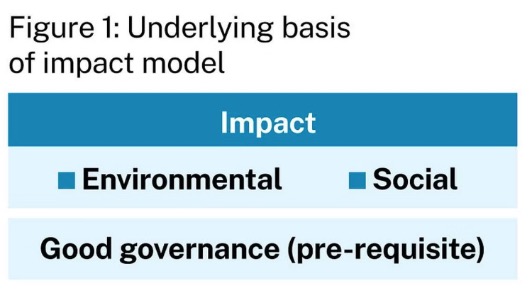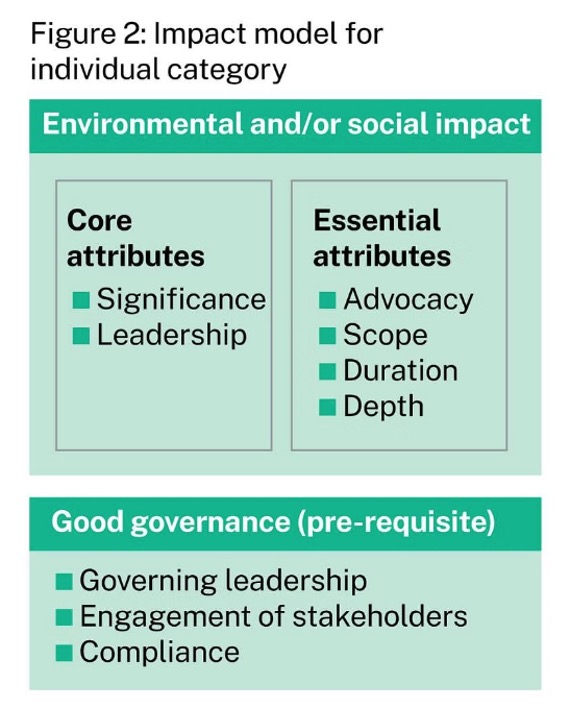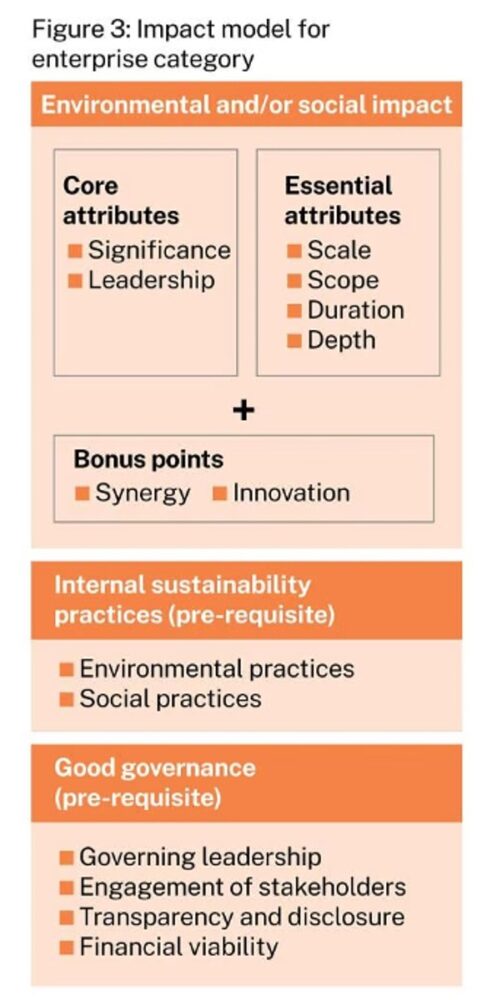Businesses have traditionally focused on disclosing the resources invested in sustainability initiatives, such as financial expenditures and human capital.
However, this approach of reporting only input is no longer sufficient. Businesses must also assess and demonstrate the tangible outcomes and impact of their efforts.
As the demand for meaningful progress in sustainability grows, companies must navigate these complexities with a clear sense of direction and purpose – ensuring that their initiatives lead to significant, lasting changes.
Conceptualising impact
Sustainability in corporations is typically viewed through the environmental, social and governance framework, which consists of components assigned to each of the three domains.
This framework is a convenient way to signify sustainable action, but is often characterised by a so-called “check-the-box” mode.
With an aim of demonstrating the changes made possible with sustainability initiatives, the Sustainability Impact Awards strive to appraise sustainability through an examination of impact and the corresponding significance.
The awards, presented by The Business Times and UOB with the Centre for Governance and Sustainability as the knowledge partner, comprise two primary categories: individual and enterprise. The enterprise category is further divided into large enterprises, and small and medium-sized enterprises.
The underlying basis of the awards is to consider singular excellence in either environmental or social domains. Excellence may also straddle both domains (Figure 1).
Good governance, meanwhile, is the bedrock for excellence in the environmental or social aspects or both. Governance is the horse that pulls the cart of environmental and social practices.
Assessing impact
The tailored model for the Sustainability Impact Awards measures both environmental and social impact in a manner comparable across entities and time.
The model is inspired by established impact methodologies, particularly the Impact Compass of the Center for Social Innovation at Stanford Graduate School of Business, the Impact Management Project by Impact Frontiers, and the Sustainability Impact Assessment of the Organisation for Economic Co-operation and Development.
At the heart of our impact model are two core attributes: significance and leadership (see Figures 2 and 3). These are supported by four essential attributes: advocacy for the individual category and scale for the enterprise category; as well as scope; duration; and depth for both categories.
Significance implies an extended outcome beyond an individual’s or business’ immediate contribution. The importance of this outcome to stakeholders should be clearly articulated in terms of how social progress is advanced, where it is most needed, as well as why additional resources are warranted.
Leadership serves as the compass indicating the desired direction. Demonstrating leadership requires both pioneering efforts in sustainability and the ability to inspire others to join the journey.
Being a pioneer implies that the business or individual has long been investing resources in sustainability, thus driving meaningful outcomes and impact. Inspiring others indicates that the impact has influenced the behaviours and interests of relevant parties, creating a ripple effect for broader-scale impact.
The essential attributes – advocacy/scale, scope, duration and depth – complement the two core elements of the model by providing additional clarity and direction.
In the individual category, advocacy highlights an ability to drive change by engagement with both internal and external stakeholders – influencing business strategies or public policies for better sustainability outcomes.
In the enterprise category, scale focuses on demonstrating the groups affected, the magnitude of people reached and the reach of the sustainability initiatives carried out.
The attribute of scope enhances the significance of impact by considering its contribution to community, national or global agendas. Duration and depth speak to the longevity and magnitude of change achieved.
Bonus consideration
Singular initiatives are rarely sufficient to achieve large-scale, lasting impact. Extensive cooperation enables businesses to move from carrying out initiatives to generating a multiplier effect – or synergy – in impact creation. Thus, bonuses may accrue to the fostering of synergy through collaborative efforts.
Innovation is another key driver for scaling up impact. It is the catalyst for transforming the current situation and amplifying the impact, and will be accorded bonuses in the awards.
Financial viability
While impact creation is critical, financial sustainability remains the bottom line for businesses. An excellent corporation must harmonise financial and impact materiality – where financial materiality safeguards the bottom line, and impact materiality charts the path forward for the environmental and social fronts.
While the Sustainability Impact Awards emphasise the impact made by winners on sustainable progress, financial adequacy is also key.
Broader application
The model detailed above may have been developed for the evaluation of the Sustainability Impact Awards, but its relevance goes beyond the awards and the winners.
Business leaders committed to joining the impact movement may use these models to guide strategic and sustainability planning. This will enable the transition from input and output metrics to broader impact for the environment and society.
Most importantly, the impact must be rooted in good governance together with financial viability.










